I first heard about Amsterdam Dance Event through a friend of mine in 2017. I’ve always been curious about what Amsterdam was like, given that its been know for being liberal on many things. Plus, I’m a big fan of techno and all sorts of house music (genres which I finally was able to narrow down to prior to this event) and what better event than ADE would supply these types of music? Also, I’ve always been sort of dipping my toes into the music industry, and I thought this would be a great way to listen to conferences and learn more about what goes on in the music industry.
Having experienced both researching and experiencing the event itself, I would love to share my thoughts, experiences, tips and strategies on Amsterdam Dance Event so that if you plan on going, you would be prepared to do so. I will split this post mainly into two sections – one about the conferences, and the other about the events. You can also read more about my Amsterdam post if you’re interested about the city itself and also about my accommodation and getting around methods.
Conferences
For conferences, you have to get at least the ADE Conference Pass, which gives you access to 4 days of conference materials but no entrance to any of the events, ADE Pass, which gives you access to 5 days of conference materials and access to all events both day and night, including events that are sold out or require special cards or what not, and the ADE Pack which is essentially the ADE Pass plus one night of hotel. Obviously if you’re going just for the conferences, you will get the conference pass, but if you’re like me and want to check out all the events, you will want the ADE Pass. By the way, for those who do not want to go to conferences and only the events, you can buy tickets to go to each event individually, which will probably result in a much cheaper alternative.
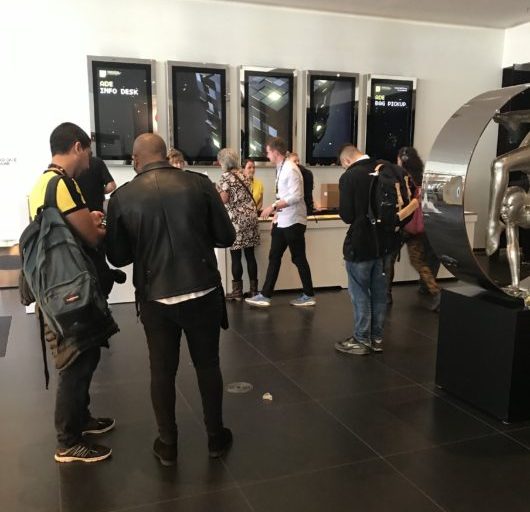 Inside the DeLaMar Theater, some attendees networking and some getting their passes
Inside the DeLaMar Theater, some attendees networking and some getting their passes
This year, a good enough portion of the talks were dedicated to the dance music scene in Asia, particularly in China and South Korea, two regions where the scene is definitely growing with an audience base still relatively unfamiliar with the specific genres and knowledge of this type of music. There were also other topics such as marketing and branding yourself as an artist, what the future looks like for individual labels, music production masterclasses, what can we learn from music festivals, and so much more; it really depends on what you want to focus on.
 Expensive foods, around €6 for sandwiches and €3+ for coffee, but everywhere in Amsterdam was like that
Expensive foods, around €6 for sandwiches and €3+ for coffee, but everywhere in Amsterdam was like that
You’re going to be facing with a lot of options on deciding which conferences to go to. I’m a pretty ambitious person, so I was hoping that I would be able to run to overlapping conferences and catch 30 minutes of a 45 minute session, but that proved to be impossible due to the venue’s different locations. The way to attend conferences successfully is to narrow down all the conference topics you want to hear first, then take out the ones that will cause you to travel back and forth. In general you want to stick to the same area, but if you’re moving from one area and then on the second half of the day you are moving to the next area, that’s fine, just don’t keep travelling back and forth because that’s impossible. From this year’s event, I would classify DeLaMar Theater and De Balie as one area, De Brakke Grond as another area, and Generator Amsterdam as another area. I never ended up at Generator as it was too far east for me. For those wanting to listen to music industry topics, DeLaMar Theater was the place to go. De Balie focused on country / regional sessions, and De Brakke Grond is where anything music recording related and production is located. At De Brakke Grond, you get to test out different gears and equipments, go to many different masterclasses and see producers work their magic, and listen to how DJS do their work. I noticed that while DeLaMar Theater and De Balie venues were packed, you can still go in them. The same cannot be said for De Brakke Grond, where once a class or session is full, you will not be allowed entry until someone leaves the room during the session.
Another tip I want to share is that don’t be like me and think you’re superman – that you can stay up all night to party till 5am and wake up again at 11am to attend the conferences. The first two days I was able to do so, but after that I found it more and more challenging and skipped some of the “earlier” conferences (12pm ones -o-) and I ended up leaving earlier during the parties as well. Make sure you find the right balance as to how much partying you want to do and how many conferences you want to attend. For me, I actually enjoy the events more than the conferences, but if you’re in the music industry and/or there on a professional basis, you may need to sacrifice and leave the party early or risk yourself being too exhausted for the next day.
Here’s my two cents on the conference programs – I did not enjoy them as much as I thought it would. Most of the sessions were only 45 minutes, with a panel of speakers, and I don’t know whether it’s because of the format, but a lot of the discussion was very high level and surface. For example, with a panel session about reaching out to audiences in China, they listed social media platforms such as WeChat, Weibo, and Tik Tok, which of course being in Hong Kong I have heard about already. But then, they don’t dive deeper as to the practical tips and guidance on how to use these platforms to reach Chinese audience – how often to post, what features to use, short or long content, what strategies were effective and what weren’t and why etc. Or take for example another discussion I went to about streaming – yes streaming is the next big thing or it will comprise a much bigger source of revenue for the musician, but what I’m curious to know is how can we utilise streaming to reach out to audiences more effectively, to get them more engaged? What are the tips and strategies to convert a listener to a customer? None of that was discussed. Also, half of the speakers weren’t the best presenters, but hey you know what, I don’t blame them since they are from the music industry.
While I thought the conferences were so so, what I think could be extremely beneficial with a conference pass is the networking. Note – I did not engage in much networking, if at all, at this event. My purpose was to learn at the conferences, explore Amsterdam, and go parties and events. Networking was not my priority. That said, from the hallways of the theaters pouring outside to the glass doors of DeLaMar theater, there were a lot of conversations going on. I think if you wanted the conference pass to meet people in the dance music community, it would be worth it. I’m guessing a lot of these conference attendees work for independent labels based on the badges they wore, and I saw some CEOs of labels, A&R, Artists, and usually a multitude of titles meaning that this individual probably has to wear many different hats within the same company.
 Here you can see people mingling outside. While this image isn’t the most evident, but 90% of the conference attendees were wearing all black. It looked like a cult.
Here you can see people mingling outside. While this image isn’t the most evident, but 90% of the conference attendees were wearing all black. It looked like a cult.
 How to Get Paid in Full by Gary Adelman, Paul Sears, Mathew Daniel, Sarah Matz. For this panel, they were talking about making sure that the contract is signed as some artists don’t do that, register your songs and compositions properly than having to deal with more mess later, trademark your artist and band names, and know what’s in the contract. Some contracts stipulate you only have a certain amount of time to raise legal issues.
How to Get Paid in Full by Gary Adelman, Paul Sears, Mathew Daniel, Sarah Matz. For this panel, they were talking about making sure that the contract is signed as some artists don’t do that, register your songs and compositions properly than having to deal with more mess later, trademark your artist and band names, and know what’s in the contract. Some contracts stipulate you only have a certain amount of time to raise legal issues.
 The Magic of Numbers: Expand your Chinese fan base by Eelke Arjaans, Fay Wang, Paul Neuteboom, and Yang Hua. People in China reach out to Chinese audiences using TikTok, Weibo, and WeChat. Make sure to have follow through while putting good content. Need to have Chinese host and Chinese language despite English content. Names such as Afrojack doesn’t register with Chinese audiences, need to educate where the artist is from and what their best hits are. Make yourself visible. And whatever is done in US can also be done in Chinese channels. Artists can also use platforms such as NetEase streaming and QQ.
The Magic of Numbers: Expand your Chinese fan base by Eelke Arjaans, Fay Wang, Paul Neuteboom, and Yang Hua. People in China reach out to Chinese audiences using TikTok, Weibo, and WeChat. Make sure to have follow through while putting good content. Need to have Chinese host and Chinese language despite English content. Names such as Afrojack doesn’t register with Chinese audiences, need to educate where the artist is from and what their best hits are. Make yourself visible. And whatever is done in US can also be done in Chinese channels. Artists can also use platforms such as NetEase streaming and QQ.
 Live and Diverse: China’s music streaming market by Anne Jenniskens, Mathew Daniel, Song Yang, and Stephen Dowler. The discussion mentioned that China’s electronic music is at an early stage right now, with most music coming from Western content. Big platforms for electronic dance music include from Tencent, Netease, and Alibaba. It’s good to get a local hero to promote songs, as well as events and label nights. In terms of the Chinese fan base, most of the audience is young. It’s also good if artists find collaboration with different genres. China needs to also start setting up music production schools and need to start providing groundwork for it. In terms of revenue, live streaming accounts for 70% of music. Also need to be involved in video game community. Remember to get your content ID and claim the rights for your music. Get professional people to help you monetize, don’t sell digital rights to those that tour. It’s becoming a streaming market and physical is dead. If artist is able to show some traction, the label will then reciprocate with more support. Nowadays instead of going through label, artists can go directly through platforms to sell and vice versa; that said, labels provide many benefits to the artists. Different platforms have different uses but streaming is aimed for a more general audience, whereas short videos platform are more aimed for a specific track to help promote.
Live and Diverse: China’s music streaming market by Anne Jenniskens, Mathew Daniel, Song Yang, and Stephen Dowler. The discussion mentioned that China’s electronic music is at an early stage right now, with most music coming from Western content. Big platforms for electronic dance music include from Tencent, Netease, and Alibaba. It’s good to get a local hero to promote songs, as well as events and label nights. In terms of the Chinese fan base, most of the audience is young. It’s also good if artists find collaboration with different genres. China needs to also start setting up music production schools and need to start providing groundwork for it. In terms of revenue, live streaming accounts for 70% of music. Also need to be involved in video game community. Remember to get your content ID and claim the rights for your music. Get professional people to help you monetize, don’t sell digital rights to those that tour. It’s becoming a streaming market and physical is dead. If artist is able to show some traction, the label will then reciprocate with more support. Nowadays instead of going through label, artists can go directly through platforms to sell and vice versa; that said, labels provide many benefits to the artists. Different platforms have different uses but streaming is aimed for a more general audience, whereas short videos platform are more aimed for a specific track to help promote.
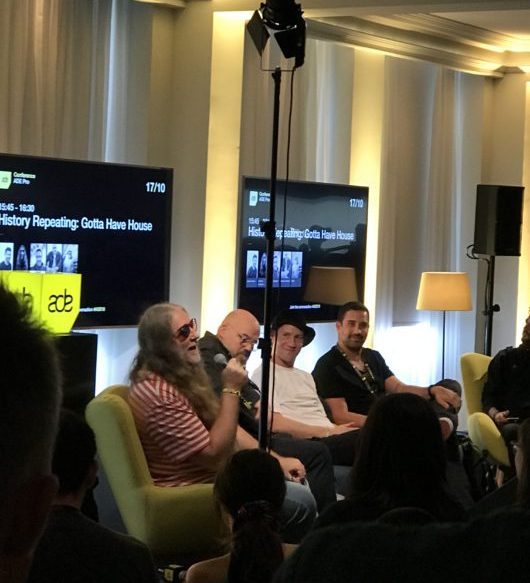 History Repeating: Gotta Have House by Austin Kramer, Deron Delgado, Henry Smithson, Simon Dunmore, Todd Terry, Tommie Sunshine. Probably one of my favorite sessions, with Tommie Sunshine (guy with the mic) as one of my favorite moderators and great storyteller, 17 years sober (started sober at 30 years old what!) Also one of the more enthusiastic crowd… I guess the attendees that came here are huge fans of these house music producers. One of the biggest takeaways from this session was that they were seeing a comeback for people to enter into House music as a result of Electronic Dance Music, and that EDM served as a gateway for audiences to now slowly get into more specific the genres which they really liked. On a personal note, I always loved house music, but I was never able to pinpoint this genre as sometimes the house music on Youtube was a hit or miss. But after going through tons of house music artists while doing my research on events to go to, I realise this was one of the many dance music genres I was really into.
History Repeating: Gotta Have House by Austin Kramer, Deron Delgado, Henry Smithson, Simon Dunmore, Todd Terry, Tommie Sunshine. Probably one of my favorite sessions, with Tommie Sunshine (guy with the mic) as one of my favorite moderators and great storyteller, 17 years sober (started sober at 30 years old what!) Also one of the more enthusiastic crowd… I guess the attendees that came here are huge fans of these house music producers. One of the biggest takeaways from this session was that they were seeing a comeback for people to enter into House music as a result of Electronic Dance Music, and that EDM served as a gateway for audiences to now slowly get into more specific the genres which they really liked. On a personal note, I always loved house music, but I was never able to pinpoint this genre as sometimes the house music on Youtube was a hit or miss. But after going through tons of house music artists while doing my research on events to go to, I realise this was one of the many dance music genres I was really into.
 Electronic Dance and the Next Phase of Streaming by Bjorn Schipper, Gary Adelman, Nevin Hendrickson, Steve Rodway, Kim Hoekema, and Tako Choi. Tako was really quiet in this session as I guess English wasn’t his first language so it made him have more difficult responding in general. Anyway, so the speakers here thought that streaming helped artists build brand, but it may take away potential revenue from creators. Also now that soundcloud is too decentralized, it may be very difficult to be discovered anymore. All agree that having a worldwide database of songs, which we are leaning towards with the Music Modernisation Act, will make licensing easier. Also some sees the mixtape still as an exposure, so even if it’s a song, it’s not really about the money but rather about getting attention.
Electronic Dance and the Next Phase of Streaming by Bjorn Schipper, Gary Adelman, Nevin Hendrickson, Steve Rodway, Kim Hoekema, and Tako Choi. Tako was really quiet in this session as I guess English wasn’t his first language so it made him have more difficult responding in general. Anyway, so the speakers here thought that streaming helped artists build brand, but it may take away potential revenue from creators. Also now that soundcloud is too decentralized, it may be very difficult to be discovered anymore. All agree that having a worldwide database of songs, which we are leaning towards with the Music Modernisation Act, will make licensing easier. Also some sees the mixtape still as an exposure, so even if it’s a song, it’s not really about the money but rather about getting attention.
 The Evolution of Online Music Consumption by Derek Barbolla, Xanthe Fuller, and Richard Wernicke. Once again, they emphasized on getting your tracks registered and published. And of course, the more your song is played on Mixcloud, the more royalties you will get. Live is good for artists as you can interact with your fans. Online engagement is important. Stay true to your content and focus on your content. Try to test things and only pay when it is working. A good KPI is engagement as it is a real measure for how good a show is, engagement meaning listeners’ minutes and reach. While Spotify’s new model is to cut out the middlemen so that anyone can upload, they believe that artists are not self sufficient enough to do all the work of a label. Having videos is a big asset to artists.
The Evolution of Online Music Consumption by Derek Barbolla, Xanthe Fuller, and Richard Wernicke. Once again, they emphasized on getting your tracks registered and published. And of course, the more your song is played on Mixcloud, the more royalties you will get. Live is good for artists as you can interact with your fans. Online engagement is important. Stay true to your content and focus on your content. Try to test things and only pay when it is working. A good KPI is engagement as it is a real measure for how good a show is, engagement meaning listeners’ minutes and reach. While Spotify’s new model is to cut out the middlemen so that anyone can upload, they believe that artists are not self sufficient enough to do all the work of a label. Having videos is a big asset to artists.
 A New Era for Independents by Lorne Padman, Siofra McComb, Nick Roden, Georgia Meyer, and Patrick Ferrell. Nowadays indies account for 38.4% of the music industry revenue, a huge increase from before. Streaming is alive and here. Steve Aoki has mentioned that playing live results in more than 90% of his music revenue. While playlists are good for promoting songs, still need marketing campaigns. Spotify wants to see that you are already doing marketing before supplicating you and supporting you. Talked a bit about the direct licensing model from Spotify. Label services include great visuals, PR (relationship with blogs, radio, DJs), having a good brand (I listen to this artist because I know this label does good drum and bass for example), and execution of plans. Indies have an easier time to switch strategies, whereas major labels because of their lengthy chain of commands may need a lot of approval before can change. Majors have resources for miming data. Majors less caring to artists because they only need 1 in 10 to make their investment justified. Indies more caring for their artists, if USD 10,000 in artist that’s a substantial amount already and so artist and indie more likely to support each other’s vision, whereas major wants to see which artist is the “lucky draw”. If major invest USD 50K in you and you tank, they will just write you off in their account books. Each stream of song Major earns USD 0.001, and smaller labels is around USD 0.002 – USD 0.004. Advantages of being in an indie include controlling your own destiny, being more nimble, own your own future, and you can build your own type of audience. Just having good music isn’t enough for an artist, you need to have a story or narrative. Spotify competing with soundcloud already. Introduce anything you do and ask if this is compelling (for the radio, listeners etc.). Even something like Avicii wanted Kazet to be in his tours makes Kazet, a no-namer, more compelling to get him on tour. Compelling also means are these compelling enough to be shared on the phone with your friends? Like have you heard of this new artist, popping off here and there. Instagram lots of followers more than major artists, also a compelling point.
A New Era for Independents by Lorne Padman, Siofra McComb, Nick Roden, Georgia Meyer, and Patrick Ferrell. Nowadays indies account for 38.4% of the music industry revenue, a huge increase from before. Streaming is alive and here. Steve Aoki has mentioned that playing live results in more than 90% of his music revenue. While playlists are good for promoting songs, still need marketing campaigns. Spotify wants to see that you are already doing marketing before supplicating you and supporting you. Talked a bit about the direct licensing model from Spotify. Label services include great visuals, PR (relationship with blogs, radio, DJs), having a good brand (I listen to this artist because I know this label does good drum and bass for example), and execution of plans. Indies have an easier time to switch strategies, whereas major labels because of their lengthy chain of commands may need a lot of approval before can change. Majors have resources for miming data. Majors less caring to artists because they only need 1 in 10 to make their investment justified. Indies more caring for their artists, if USD 10,000 in artist that’s a substantial amount already and so artist and indie more likely to support each other’s vision, whereas major wants to see which artist is the “lucky draw”. If major invest USD 50K in you and you tank, they will just write you off in their account books. Each stream of song Major earns USD 0.001, and smaller labels is around USD 0.002 – USD 0.004. Advantages of being in an indie include controlling your own destiny, being more nimble, own your own future, and you can build your own type of audience. Just having good music isn’t enough for an artist, you need to have a story or narrative. Spotify competing with soundcloud already. Introduce anything you do and ask if this is compelling (for the radio, listeners etc.). Even something like Avicii wanted Kazet to be in his tours makes Kazet, a no-namer, more compelling to get him on tour. Compelling also means are these compelling enough to be shared on the phone with your friends? Like have you heard of this new artist, popping off here and there. Instagram lots of followers more than major artists, also a compelling point.
 Video – Talking to You(th) by Dennis Nieuwendijk, Fleur Hofstra, Louiza Voorthuijsen and Manon Fennis. They showed two case studies of how they used videos to appeal to youths. In the photo above, they combined Durex with the use of bananas and showed and filmed videos in music festivals. In another case study with Puma as an example, they used a local Dutch artist/rapper and have him do a couple of IG stories on his daily lives. He was popular in the local community.
Video – Talking to You(th) by Dennis Nieuwendijk, Fleur Hofstra, Louiza Voorthuijsen and Manon Fennis. They showed two case studies of how they used videos to appeal to youths. In the photo above, they combined Durex with the use of bananas and showed and filmed videos in music festivals. In another case study with Puma as an example, they used a local Dutch artist/rapper and have him do a couple of IG stories on his daily lives. He was popular in the local community.
 Chuckie and the Brand Power of Artists by Chuckie (LET THE BASS KICK) and Hans Schlatmann. Hans was from Sony and he, while not one of the most enthusiastic speakers, mentioned a slide that is still extremely powerful in my mind today – artists usually share an identity that relates to the audience, and there are 12 of them depending on where you lie in the Freedom vs. Order and Ego vs. Social chart. 12 types of identities include Rebel, Entertainer, Lover, Caregiver, Everyman, Innocent, Ruler, Sage, Magician, Hero, Creator, Explorer. Ed Sheeran for example will definitely be in the everyman category, where he’s often portrayed and seen as just a typical average person that can be seen in supermarkets, and his lyrics portray that too. Whereas someone like Lady Gaga would be more portrayed as a Rebel. Chuckie on the other hand is seen as an Entertainer, someone who provides Energy, Fun, and Enjoying the Moment when he is DJing. It is important to know what values and identity you stand for and that will attract audiences that will relate to those values and identity. Chuckie chimed in and also said that when he does partnerships, or when any artists does partnerships, it has to make sense. Forget about the money. When he was young, he wanted to reach an older audience, and Heineken? I believe wanted to reach a younger audience with their beer. So their partnership worked out. Kanye West and Sneakers/Fashion makes sense due to how they are perceived.
Chuckie and the Brand Power of Artists by Chuckie (LET THE BASS KICK) and Hans Schlatmann. Hans was from Sony and he, while not one of the most enthusiastic speakers, mentioned a slide that is still extremely powerful in my mind today – artists usually share an identity that relates to the audience, and there are 12 of them depending on where you lie in the Freedom vs. Order and Ego vs. Social chart. 12 types of identities include Rebel, Entertainer, Lover, Caregiver, Everyman, Innocent, Ruler, Sage, Magician, Hero, Creator, Explorer. Ed Sheeran for example will definitely be in the everyman category, where he’s often portrayed and seen as just a typical average person that can be seen in supermarkets, and his lyrics portray that too. Whereas someone like Lady Gaga would be more portrayed as a Rebel. Chuckie on the other hand is seen as an Entertainer, someone who provides Energy, Fun, and Enjoying the Moment when he is DJing. It is important to know what values and identity you stand for and that will attract audiences that will relate to those values and identity. Chuckie chimed in and also said that when he does partnerships, or when any artists does partnerships, it has to make sense. Forget about the money. When he was young, he wanted to reach an older audience, and Heineken? I believe wanted to reach a younger audience with their beer. So their partnership worked out. Kanye West and Sneakers/Fashion makes sense due to how they are perceived.
 XOSAR!!! (she is cute no??) Anyway loved her music since my friend played her Vinyl of her song (I believe it was the Calling OR Rays of Babylon) and absolutely loved her Boiler Room set (can’t find it on YouTube anymore?? – not the Dekmantel Festival 2018 one..) she used to study neuroscience and didn’t like the work field so she studied sound design in San Francisco… I found the instruments in her songs exciting and incredibly unique. Anyway she did a discussion on Sound Healing and how certain sound frequencies resonate with our bodies much more and that some frequencies have a “healing” effect on our bodies and science has proven this as well. Even nowadays, musicians will detune from the usual 440hz of ‘A’ to 432hz as this has shown to be a more natural tune where when this sound is played on sand, it forms perfect patterns like snowflakes but anything above or below 432hz, the sand will become total chaos. Different frequencies will affect our alpha, beta, gamma, and theta waves, as Xosar is demonstrating buy wearing a head equipment and playing the pitch fork on the app. Other notes: 64 Hz another natural tonality, at 128hz nitric oxide will release to heal ailments and activate cell tissues and cellular wall. When there are two different tones in different ears, the brain will create a third frequency tone. Something about 7.83-8.1, and 36.1 (maybe 136.1?) responds to the heart. Goniometer, polyrhythms, voodoo rhythms, phase shifting.
XOSAR!!! (she is cute no??) Anyway loved her music since my friend played her Vinyl of her song (I believe it was the Calling OR Rays of Babylon) and absolutely loved her Boiler Room set (can’t find it on YouTube anymore?? – not the Dekmantel Festival 2018 one..) she used to study neuroscience and didn’t like the work field so she studied sound design in San Francisco… I found the instruments in her songs exciting and incredibly unique. Anyway she did a discussion on Sound Healing and how certain sound frequencies resonate with our bodies much more and that some frequencies have a “healing” effect on our bodies and science has proven this as well. Even nowadays, musicians will detune from the usual 440hz of ‘A’ to 432hz as this has shown to be a more natural tune where when this sound is played on sand, it forms perfect patterns like snowflakes but anything above or below 432hz, the sand will become total chaos. Different frequencies will affect our alpha, beta, gamma, and theta waves, as Xosar is demonstrating buy wearing a head equipment and playing the pitch fork on the app. Other notes: 64 Hz another natural tonality, at 128hz nitric oxide will release to heal ailments and activate cell tissues and cellular wall. When there are two different tones in different ears, the brain will create a third frequency tone. Something about 7.83-8.1, and 36.1 (maybe 136.1?) responds to the heart. Goniometer, polyrhythms, voodoo rhythms, phase shifting.
 ADE also had a Gear Lab in De Brakke Grond where you get to try different synthesizers, hardware, software, DJ equipments etc.
ADE also had a Gear Lab in De Brakke Grond where you get to try different synthesizers, hardware, software, DJ equipments etc.
 You get to mix and match and utilise filters on top of Peak filters. That equipment at the bottom is a Novation Bass station II; I have that at home. Amazing bass sounds.
You get to mix and match and utilise filters on top of Peak filters. That equipment at the bottom is a Novation Bass station II; I have that at home. Amazing bass sounds.
 Roland AX-Edge. Funny and embarrassing story – I tried putting this on, and once I put it on it fell and I ended up scrapping a bit of my finger. Apparently the person(s) who played with this didn’t have the strap on tightly, so once I had the strap around my shoulder, it fell
Roland AX-Edge. Funny and embarrassing story – I tried putting this on, and once I put it on it fell and I ended up scrapping a bit of my finger. Apparently the person(s) who played with this didn’t have the strap on tightly, so once I had the strap around my shoulder, it fell 
 I tried DJING some house music! Maybe I will focus more on being a DJ as well?? (hint)
I tried DJING some house music! Maybe I will focus more on being a DJ as well?? (hint)
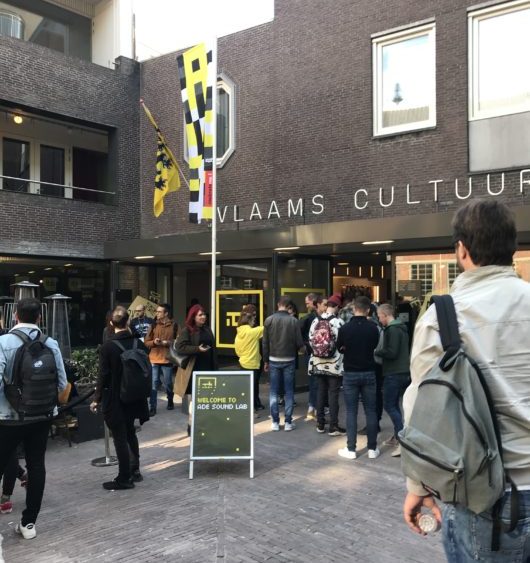 Outside the de Brakke Grond. To the left of this photo is actually a couple of experts who you can share your songs with either on your phone or laptop or whatever, and then they will give you feedback. I didn’t have enough time that week to do this unfortunately.
Outside the de Brakke Grond. To the left of this photo is actually a couple of experts who you can share your songs with either on your phone or laptop or whatever, and then they will give you feedback. I didn’t have enough time that week to do this unfortunately.
Events
I spent a week, yes a whole week from day and night, sampling a few DJs from all the events there were in ADE. Eventually, I boiled down to mainly events that prioritised House music or Techno music, but that still gave me 10+ overlapping events, especially during the night. I then narrowed it down based on location, on how far it was compared with other events or from where I was staying at. In reality, most of the events I attended were the ones my friend recommended me to go, because a) our music tastes were similar and b) the ones he went to were the ones with more people. There were a couple on my chosen list where very little (less than 10 persons) showed up, so eventually I gave up some of my list. Here are a few noteworthy venues you should prioritise when choosing which ADE events to go to:
- Havenpark (more on that later; the biggest music festival of ADE)
- Gashouder (really cool venue for raves)
- Shelter VBX (didn’t go, but my friend recommended)
- Club Air
- Panama (didn’t go, but my friend recommended)
- Melkweg
- Het Sieraad (craftsmen school turned into event and activity space)
- Paradiso
- Sugar Factory
- NDSM
- Undercurrent
- Warehouse Elementenstraat
- Jimmy Woo
Mainframe’s C*NT APPROVED Party (hosted in The Web)
 When I mentioned 10 persons or less, this was the place. I had this on my go to list.
When I mentioned 10 persons or less, this was the place. I had this on my go to list.
 Djs I saw here include John Spinosa and Manny Ward
Djs I saw here include John Spinosa and Manny Ward
 Due to a lack of people, I was out of here in less than 20 minutes
Due to a lack of people, I was out of here in less than 20 minutes
Dailycid (hosted in Het Sieraad)
As mentioned above, this was a craftsmen school turned event space. Really cool place to host music events like these.
 People in Amsterdam don’t party until at least 12:30am. This photo was taken at around 11:15pm.
People in Amsterdam don’t party until at least 12:30am. This photo was taken at around 11:15pm.
 The DJs that played that night include DJ W!LD, Ion Ludwig, Bluetrain, Steve Rachmad, and Traumer
The DJs that played that night include DJ W!LD, Ion Ludwig, Bluetrain, Steve Rachmad, and Traumer
Melodic Deep Afterparty (hosted in 50:HERTZ Techno Cafe Rembrandt Square – Bar Lunar)
This was a 4-8am set. I think I was there just for 30 mins, not too many people and I was exhausted by then. But I wanted to check it out.
 Djs in this event included Malbetrieb, Sandeep, Steve Banning, and Precursor
Djs in this event included Malbetrieb, Sandeep, Steve Banning, and Precursor
#DJMAGHQ ADE (hosted in Nova Club)
 DJs I heard included Anna Wall (as seen above), Soairse, and Mariel Ito
DJs I heard included Anna Wall (as seen above), Soairse, and Mariel Ito
 Mariel Ito. This event was from 4-8pm
Mariel Ito. This event was from 4-8pm
Awakenings x Adam Beyer Presents Drumcode (hosted in Gashouder)
This was one of my favourite events… although many of them are my favourites. But I discovered that artists like Adam Beyer and Ida Engberg were my type of music. Also, super large event. Dirty – your white shoes will be brown afterwards. But great sound system, fun place.
 IDA ENGBERG <3 and really cool visuals
IDA ENGBERG <3 and really cool visuals
 Adam Beyer as seen above. Other DJs from this event included Ida Engberg, Enrico Sangiuliano, Dubfire & Nicole Moudaber. DJs I didn’t get to hear that night include Layton Giordani and Amelie Lens (who was playing at 6-8am, too late for me!)
Adam Beyer as seen above. Other DJs from this event included Ida Engberg, Enrico Sangiuliano, Dubfire & Nicole Moudaber. DJs I didn’t get to hear that night include Layton Giordani and Amelie Lens (who was playing at 6-8am, too late for me!)
Do Not Sleep Ibiza – Amsterdam (hosted in AIR)
A club located 1 minute away from my accommodation Eden Hotel, I was surprised how awesome and cool this place was. On one side is the main venue, a cascading steps with illuminating red lights as its main visuals and outstanding sound system. Hidden quite secretly yet where everybody knows is a small rectangular room where everyone is packed to the darkness of the room.
 DJs that night included Matthias Tanzmann, Davide Squillace, Joey Daniel, LEON, Emanuel Satie, Luca Donzelli, Mar-T. Room 2 was CHUS+CEBALLOS, Hector Cuoto, Danny Serrano, and Andrew Meller. Room 3 (I didn’t know this until writing this sentence there was a room 3) was Ronnie Spiteri, Jansons, and Dan Black.
DJs that night included Matthias Tanzmann, Davide Squillace, Joey Daniel, LEON, Emanuel Satie, Luca Donzelli, Mar-T. Room 2 was CHUS+CEBALLOS, Hector Cuoto, Danny Serrano, and Andrew Meller. Room 3 (I didn’t know this until writing this sentence there was a room 3) was Ronnie Spiteri, Jansons, and Dan Black.
Fedde le Grand presents Darklight Sessions (hosted in Escape Club)
It was Fedde le Grand, so I had to check him out although I think I was too late for him. Not my most favorite club, and it was a hip hop / urban night, so I was like ‘meh’. I went after checking out Club AIR. Club was half empty, but the bouncers still made you wait in queue for a bit.
 DJs that played that night include Fedde le Grand, Bob Sinclar, EDX, Leroy Styles, Zawdi MC, Croatia Squad, and Funk Machine
DJs that played that night include Fedde le Grand, Bob Sinclar, EDX, Leroy Styles, Zawdi MC, Croatia Squad, and Funk Machine
 This guy on the mic is pretty good, but he looks like Chubby Drake ^__^
This guy on the mic is pretty good, but he looks like Chubby Drake ^__^
Dockyard and Mystic Garden Festival (hosted in Havenpark)
THE event to go to for Amsterdam Dance Event, attended by tens of thousands of people from all over the world. This is a combination of two music festivals, Dockyard and Mystic Garden Festival, and together they comprise of at least six music stages. Located in the west at Havenpark, this is a must go event. Starts early, ends at 11pm.
 For many of ADE events, you buy tickets first with cash, then you use the tickets to redeem food and drinks. Here in this photo above, you can pay €7 for a locker.
For many of ADE events, you buy tickets first with cash, then you use the tickets to redeem food and drinks. Here in this photo above, you can pay €7 for a locker.
 Indonesian Chicken with Indonesian secret sauce. Surprisingly the food in this festival was really good… probably some of the best food I had in Amsterdam!
Indonesian Chicken with Indonesian secret sauce. Surprisingly the food in this festival was really good… probably some of the best food I had in Amsterdam!
 Really yummy fries. Everyone got Mayo. I said no mayo. They frowned. I wanted ketchup!!
Really yummy fries. Everyone got Mayo. I said no mayo. They frowned. I wanted ketchup!!
 Another DJ I was listening to – Paco Osuna ??
Another DJ I was listening to – Paco Osuna ??
ADE & Friends Closing After Party (hosted in Le Nouveau Riche)
After Dockyard & Mystic Garden, I was too exhausted to go to any night events. Was a good boy, slept early (1am?), and somehow managed to wake up naturally at 7-8am ish. Decided, you know what I’m in ADE, so I got ready and walked to Le Nouveau Riche and started partying at 9am.
 DJ I heard was Chester Code. Other DJs playing that event included – Agent Orange, Becka, DJ Prinz, DJ Maroo, Alex Pi, Najel Monteiro, MC Fadoua Mae, DVJ-Focus. There was about ~20 persons in the club, some still ordering beers. Some looked stoned.
DJ I heard was Chester Code. Other DJs playing that event included – Agent Orange, Becka, DJ Prinz, DJ Maroo, Alex Pi, Najel Monteiro, MC Fadoua Mae, DVJ-Focus. There was about ~20 persons in the club, some still ordering beers. Some looked stoned.
ADE Hangover (in NDSM)
An outdoor venue setup with many different stages, including one in a barn, one in a tent, and more. It was similar to the feel of a music festival, but since it was on a Sunday, the vibe was more relaxed. Even the music selection wasn’t as intense.
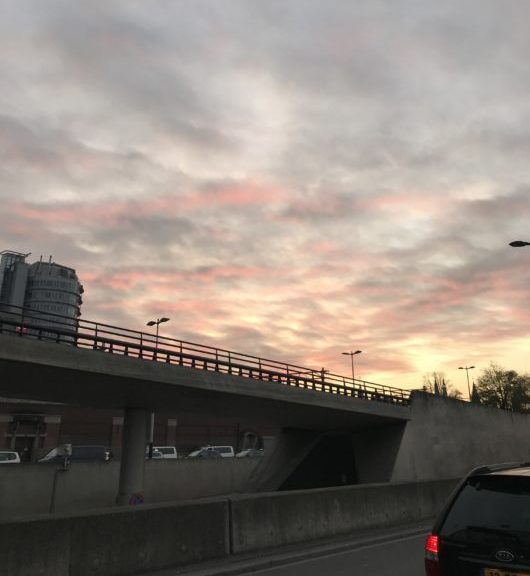 The sky prior to the ferry ride. Beautiful pink and grey skies – that week for ADE had perfect weather
The sky prior to the ferry ride. Beautiful pink and grey skies – that week for ADE had perfect weather
 Some other club called SEXYLAND
Some other club called SEXYLAND
ADE ’18 Closing Afterparty (in Undercurrent)
10 minutes walk from NDSM, this very cool and sick venue just right beside the sea is the perfect way to end my short journey with ADE.
 Looks like a fine dining restaurant from outside
Looks like a fine dining restaurant from outside
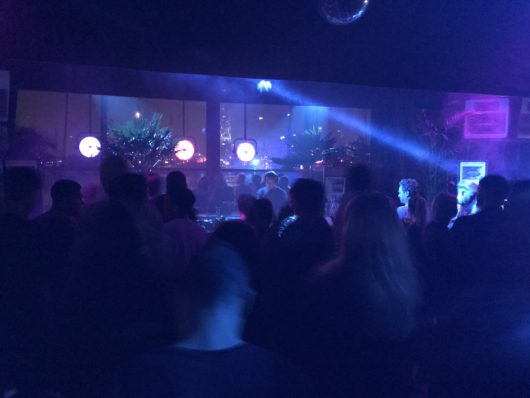 First room, the more popular room. DJs in this room included Amorf, Baltazar, Barac, Bruno Curtis, Cap, Dubtil, Ion Ludwig, Priku, and Rhadoo
First room, the more popular room. DJs in this room included Amorf, Baltazar, Barac, Bruno Curtis, Cap, Dubtil, Ion Ludwig, Priku, and Rhadoo
 Second room, as you can see much less packed. Djs included DJ Dustin, Edward, Konstantin, Mbeck, SaPa, Vlada, Melchior Productions Ltd, Children of Valis
Second room, as you can see much less packed. Djs included DJ Dustin, Edward, Konstantin, Mbeck, SaPa, Vlada, Melchior Productions Ltd, Children of Valis
 From the DJ Booth that I wasn’t supposed to be in
From the DJ Booth that I wasn’t supposed to be in
Tips and Strategies for myself and for you for future:
- Unless in the music industry and unless there are conference topics really appealing to you or if you want to network, go for the ADE Pass. Otherwise, rest up instead in the mornings, enjoy Amsterdam etc. and skip the conferences. Well if I were to go again, I may concentrate on the music production masterclasses more than the conference talks. During the conferences, speakers overlapped talking about Spotify’s new model, Music Modernisation Model, the importance of streaming, the rise of indies etc.
- While ADE promotes a safe culture for substances, be sure to know where you are getting your substances from to ensure the quality and intensity of the substances
- Like most bathrooms in Europe, they cost €0.5 or a Euro. Try to use bathrooms before event
- Go to night events at 12pm or more, day events at least from 3pm unless there are certain DJs you have to listen
- Vary the genres of music you listen to. Mine was primarily techno and minimalistic so it became just a tad too much by the end
- bring earplugs
- good idea to bring backup battery charger
- Uber, not taxi
- arrive Amsterdam earlier. I arrived on the day of, so for the first two to three days I was sleeping from 6-9pm as I was jet lagging
Would I want to go again? Absolutely, if the circumstances are right. The weather was perfect, I controlled the type of music I wanted to listen to, I felt safe, and everybody was cool and friendly. The difficult part was getting home late at night, since taxis were expensive and buses were infrequent. Considering how scattered all the venues were, the organizers did a terrific job.
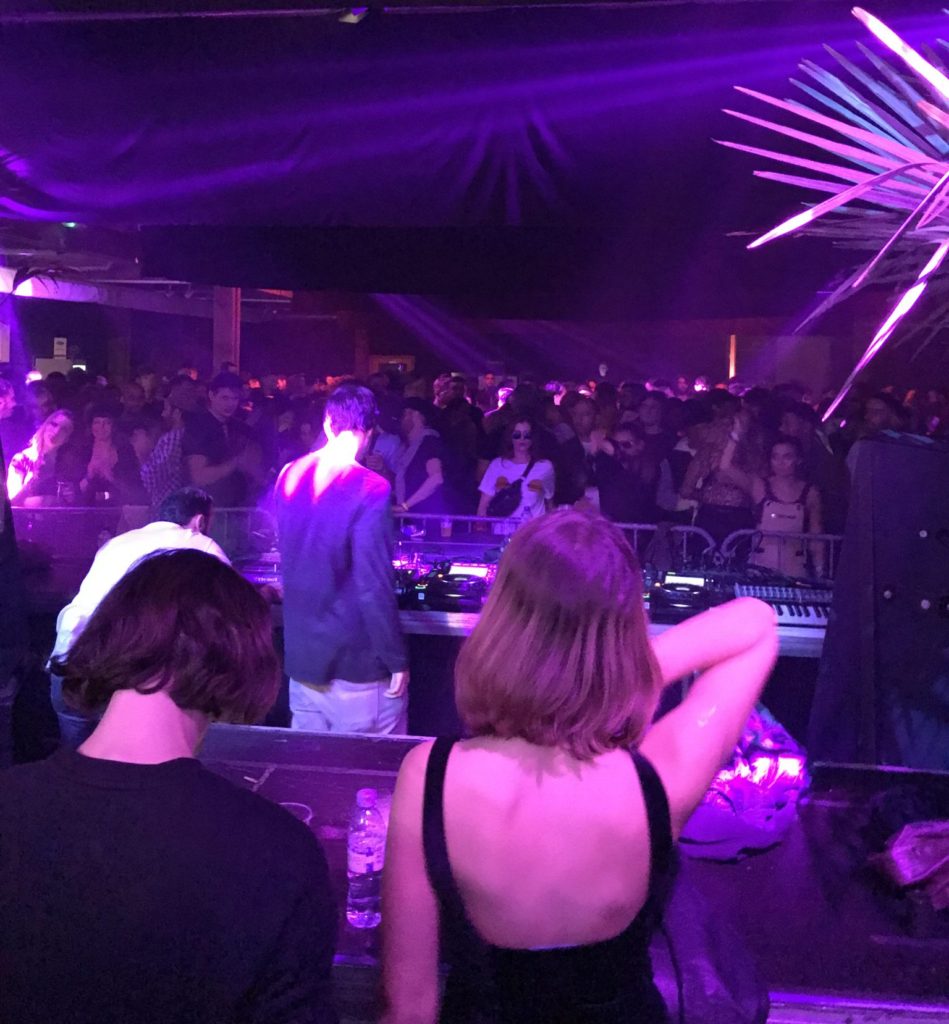



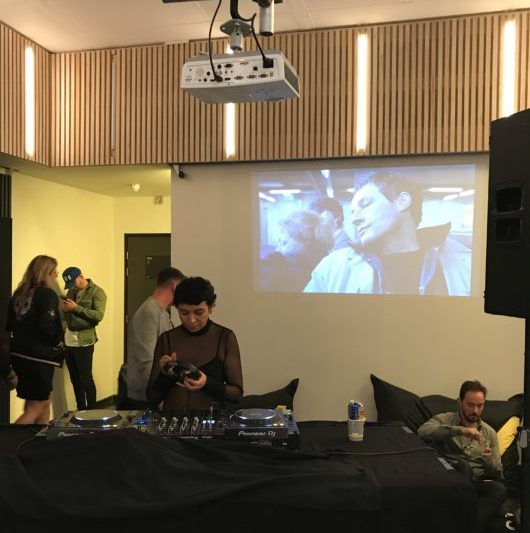

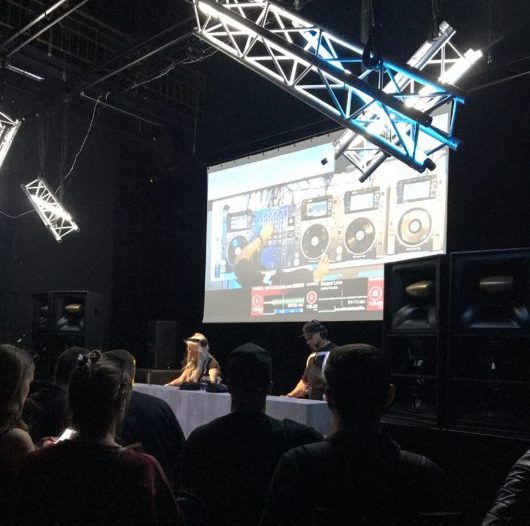







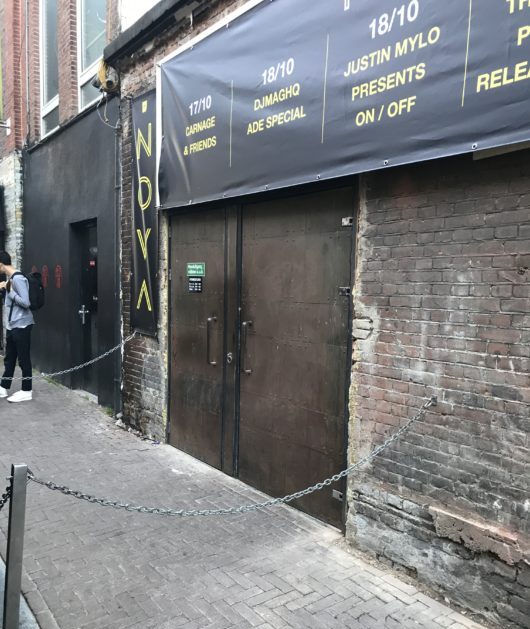
































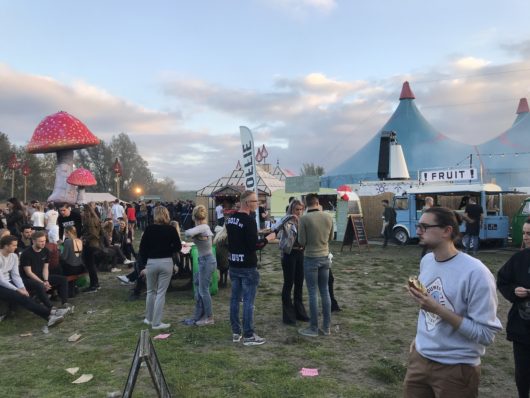













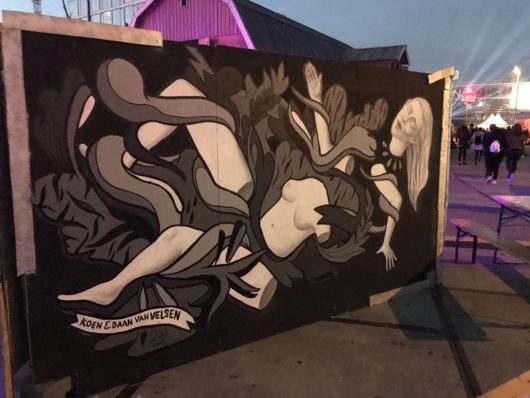




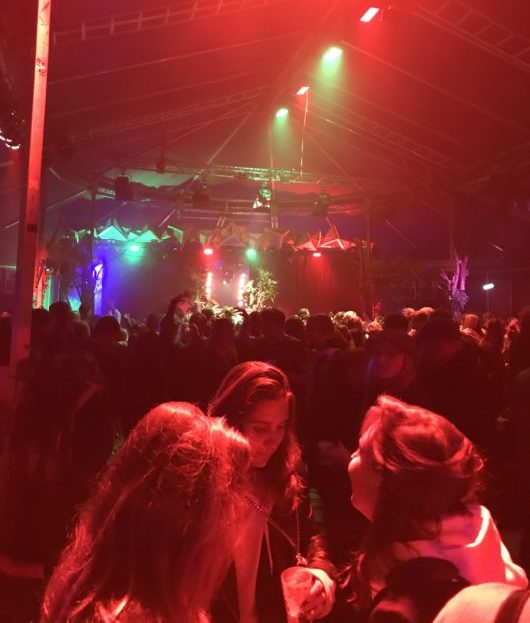





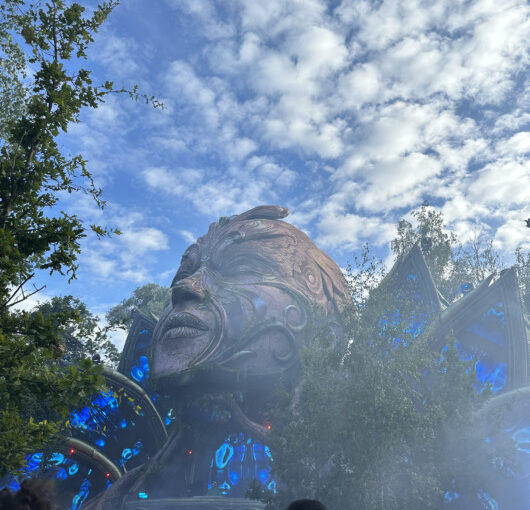
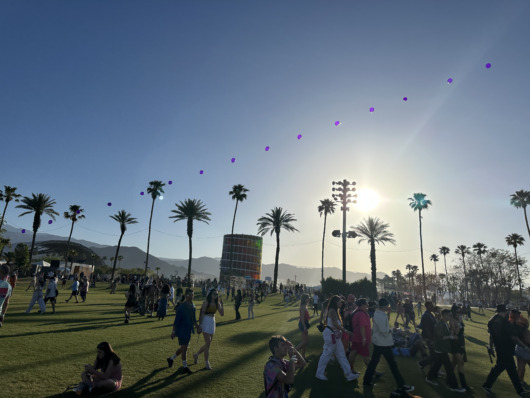
This is super detailed and you really paid attention!